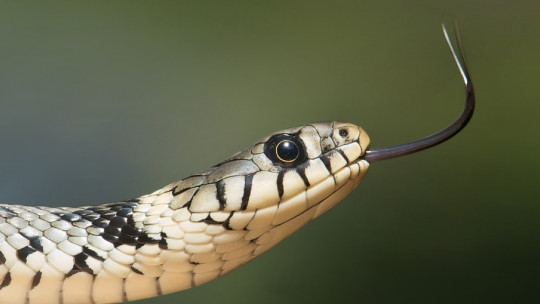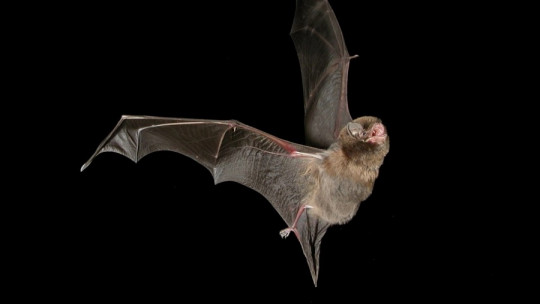Although it is true that snakes enjoy little fame among people and that stories about them have earned them the reputation of being very dangerous animals, the reality is that on rare occasions a coincidence with a snake poses a real threat to the life of the person. person.
Despite this, ophidiophobia or phobia of snakes It is one of the most common specific phobias worldwide. Throughout this article we will see what it consists of and how it manifests, as well as its possible causes and most effective treatments.
What is ophidiophobia?
Ophidiophobia is a specific anxiety disorder in which the person experiences an exacerbated, irrational and uncontrollable fear of snakes. Although experiencing a certain degree of fear in the presence of one of these reptiles is something absolutely natural, in ophidiophobia the fear must be unjustified and exaggerated compared to the real threat what the situation entails.
Some keys that help us differentiate between a normal and adaptive fear of snakes and a phobia are the behavior that the person exhibits in situations in which the animal does not pose a danger. These situations can range from the fear experienced when seeing them in a zoo, to experiencing anxious symptoms simply when seeing a photo or a toy reproduction.
The phobia of snakes or ophidiophobia is found within another type of somewhat more generalized phobia: herpetophobia, which is included in zoophobias Herpetophobia refers to the intense and exaggerated fear of any type of reptile.
What symptoms does it present?
Like the rest of phobias or specific anxiety disorders, ophidiophobia has a series of symptoms typical of this type of alterations. Their symptoms can be divided into three large groups: physical symptoms, cognitive symptoms and behavioral symptoms.
As is usual in all types of conditions, there is no common and rigid pattern of symptoms , but these can vary both in their incidence and in their degree of intensity. These individual differences in the manifestation of symptoms will change depending on the intensity of the fear that the person experiences.
1. Physical symptoms
When a person with ophidiophobia is in a situation involving the appearance of any type of snake, hyperactivity of the autonomic nervous system will automatically be triggered.
This hyperactivity generates a reaction in the body which undergoes a large number of changes and alterations. Within these changes we find the following.
2. Cognitive symptoms
For physical symptoms to appear in the presence of a snake, the person must also have a series of previous cognitive symptoms. This cognitive symptomatology occurs due to an association of the phobic stimulus with a series of irrational ideas and beliefs about these reptiles
These distorted beliefs favor the development of the phobia, reflected in the following way.
3. Behavioral symptoms
Finally, as in all conditions in which fear and anxiety exceed the person’s control, ophidiophobia also includes a series of behavioral symptoms that appear in response to the sighting or perception of the aversive stimulus.
These acts are carried out with the intention of either directly avoiding the situation that causes discomfort, or escaping as quickly as possible once the aversive stimulus has appeared. These behaviors They are known as escape and avoidance behaviors
Behaviors known as avoidance behaviors are carried out with the intention of avoiding encountering any type of snake. In them the person performs all types of behaviors to avoid the stimulus that is the object of the phobia and thus not experience the feelings of anguish and anxiety that it causes.
For example, these avoidance behaviors can be reflected in the constant avoidance or refusal to visit zoos or any type of facility in which these reptiles may appear; as well as avoid traveling to exotic countries.
Finally, escape behaviors appear when the person has not been able to avoid encountering the phobic stimulus and once the feeling of discomfort is experienced, they will carry out all types of behaviors that allow them to escape from the current situation as soon and as quickly as possible.
What causes this phobia?
One of the main features that characterizes phobias is the impossibility, in most cases, of defining the specific origin of a phobia. However, there are a series of factors that can facilitate the appearance, development and maintenance of a phobia.
someone with a genetic predisposition to suffer the effects of stress to a greater extent accompanied by the experience of a highly traumatic experience or one with a very high emotional charge in which the aversive stimulus (in this case snakes) plays a relevant role, can be much more vulnerable when it comes to developing a phobia.
However, in the specific case of snakes, there are some theories that expose other factors, in addition to genetics and traumatic experience, that can justify the intense fear that a person feels towards them.
The first theory points to the idea that ophidiophobia has an evolutionary foundation that has not disappeared in some people. These hypotheses maintain that in the past the danger that snakes posed to the physical integrity of humans was much higher, so the feeling of alertness and danger towards this reptile was much more intense. This feeling would have lasted to this day in some of these people who suffer from ophidiophobia.
On the other hand, the mythology that surrounds this animal and the symbolism that is associated with it facilitate the development and maintenance of these fears and irrational and aversive beliefs regarding snakes.
Is there a treatment?
In the event that the person suffers from real ophidiophobia, and not a normal fear of snakes, adequate treatment can reduce, and even eliminate, the anxiety response associated with the aversive stimulus.
The high effectiveness of psychological interventions In the treatment of phobias they have become the main method of choice when it comes to relieving symptoms.
Cognitive-behavioral therapy in which, through cognitive restructuring, the patient’s distorted thoughts are modified as well as techniques such as systematic desensitization or in vivo exposure and training in relaxation techniques, is highly effective and usually has very satisfactory results for the patient.









